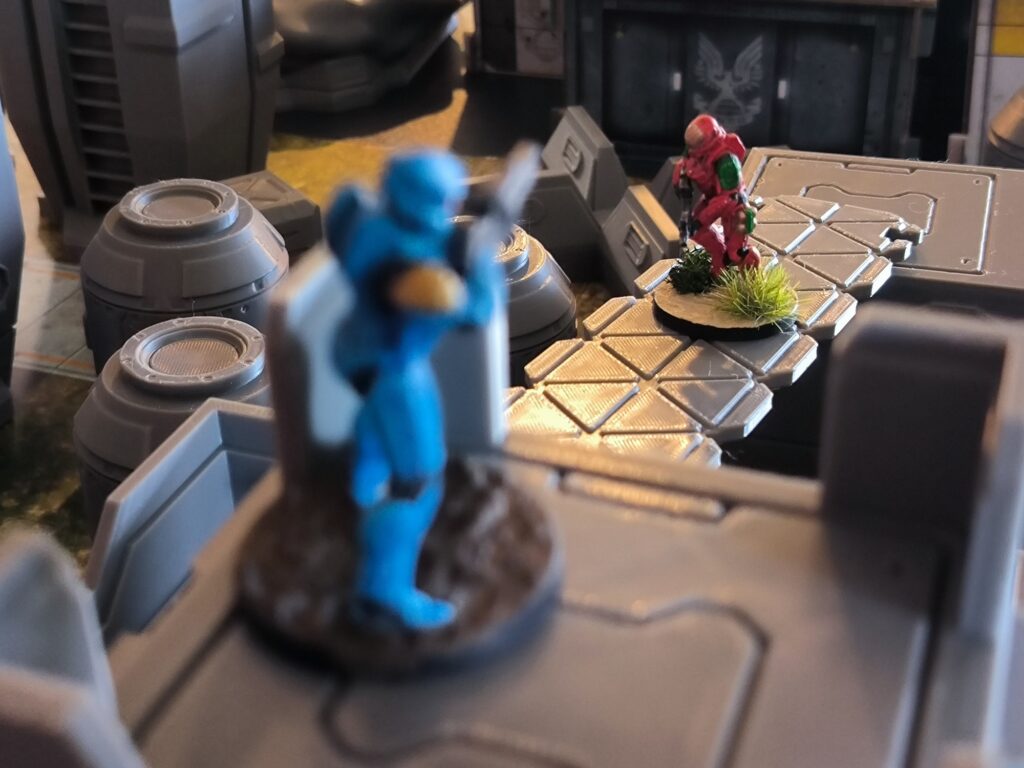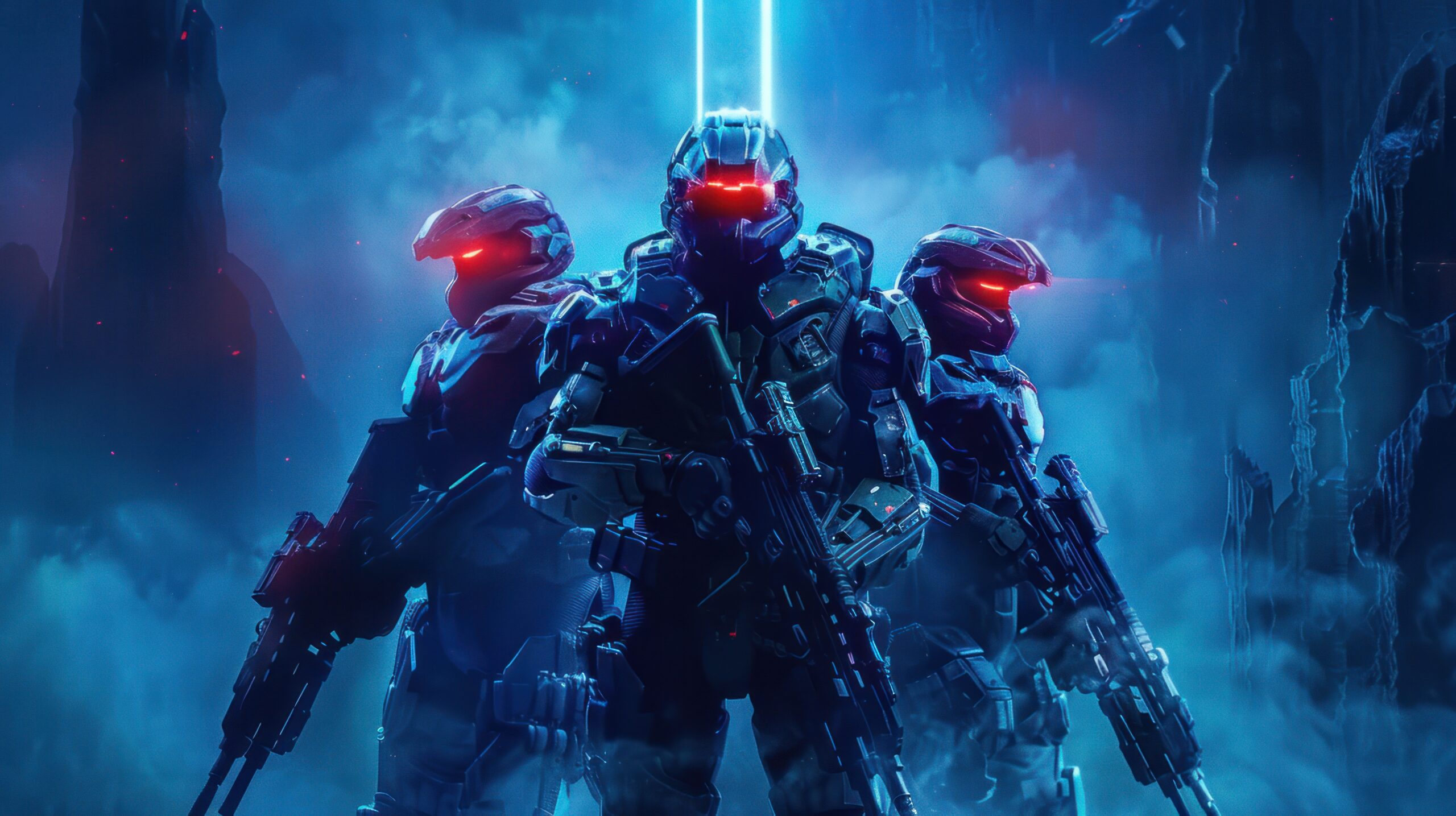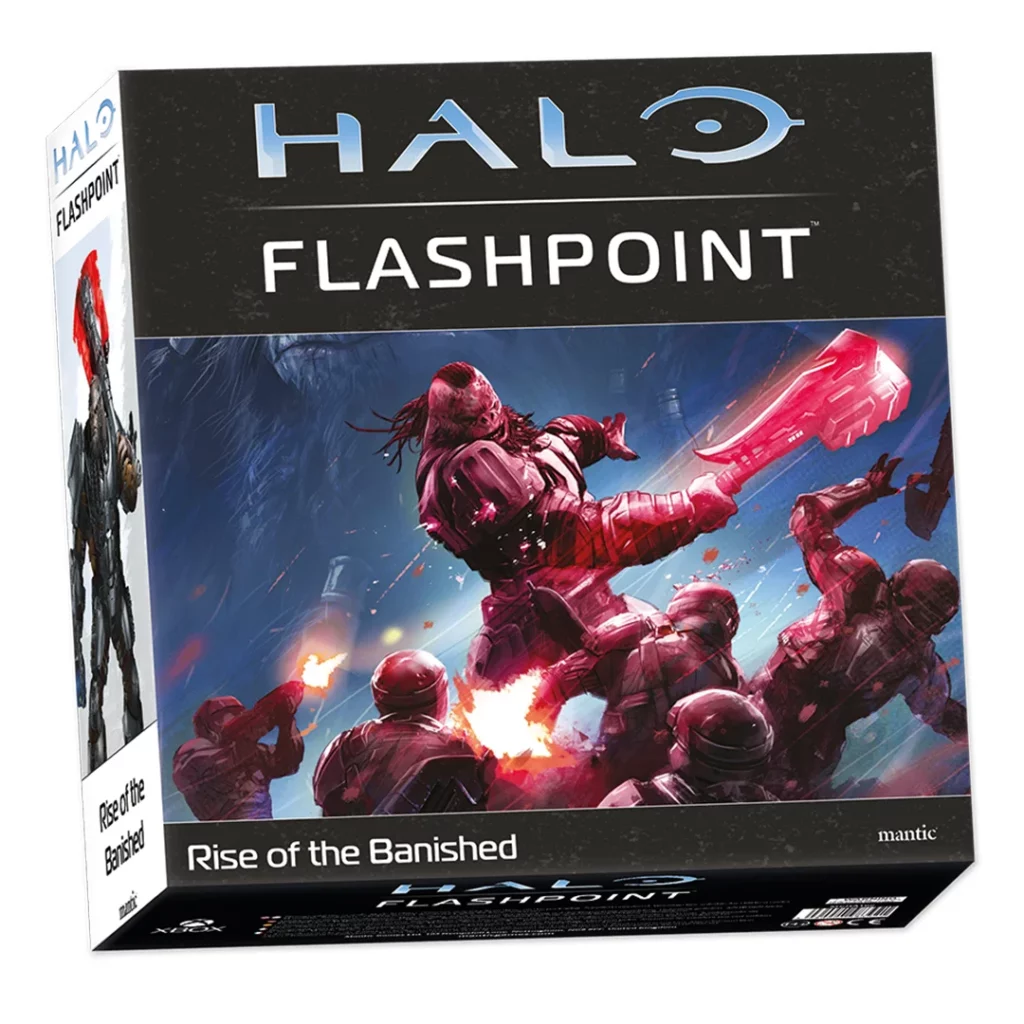Halo: Flashpoint – Ranged combat rules explained
Halo: Flashpoint by Mantic Games is an action-packed skirmish tabletop set in the Halo universe. One of the central mechanics of the game is ranged combat, which determines whether your team has to take out the enemy at a distance or get involved in dangerous close combat. In this article, I will explain the most important aspects of the ranged combat rules in Halo: Flashpoint.
1. Ranged combat basics
In Halo: Flashpoint, the units use various firearms to fight enemies at a distance. Each unit has one or more weapons in its profile with the following values:
- Range: Indicates the distance at which the weapon can be used effectively.
- Special rules: Some weapons have additional effects, such as armor piercing or area damage.
In addition, you have to check what the unit card says about the dice value required for a successful ranged attack
- Hit value on the unit card: Determines which dice roll is required to land a hit.
2. Firing phase – step by step
Ranged combat is a short action and takes place in several clearly defined steps:
1. Select the target
A unit can shoot at an opponent if:
- This is within range of the weapon. The range is indicated on the weapon
- There is a direct line of sight between the shooter and the target.
- No rule or condition prohibits shooting (e.g. camouflage).
2. Consider modifiers in ranged combat
Depending on the situation, modifiers can influence the attack:
- Cover: Units behind obstacles make it more difficult to hit. However, if the target is completely visible (clear shot), there are two extra dice
- Elevated terrain: If the firing unit is higher than the target, an additional dice is awarded
- Specialties: Additional modifiers. e.g. if a unit is crouching (crouch), then there is also an extra dice. Or if there is something special about the weapon used. Or, for example, if a friendly unit is in the same cube as the target, then there are two dice less.
3. Attack and defense throw
A ranged attack is a so-called “3 Dice Ranged Test (X)”.
This means you have (without modifiers) 3 D8 dice (possibly additional extra dice if the target is freely visible or you are standing on elevated terrain). The (X) means that the hit dice are offset against the opponent’s “defense dice”. If more dice hit than the opponent has “successful” defense rolls (the defense roll is called “3 Dice Survice Test (X)”), then the difference is equal to the damage inflicted.
Example (see picture) for ranged combat:
The blue unit shoots at the red unit. According to the unit card, the blue unit has a ranged combat skill of +4. As you can see in the picture, the blue unit is elevated and the red unit is completely visible (clear shot). This means that the blue player may roll 6 dice. 3 basic dice (3 dice range test) +2 dice for the clear shot and +1 dice for the elevated position. He now rolls the 6 dice, and every dice that shows a 4 or more is a hit.
Special rules: if an 8 is rolled with a dice, this is considered a headshot and an extra dice may be rolled.
We dice 6D8 and get 2, 3, 6, 7 and 8. Since an 8 was rolled, an extra roll is added which results in a 5. This gives us 4 hits (6, 7, 8 and the 5)
The red unit has a defense value of 5+ according to the unit card. The player rolls three dice and must have more than or equal to 5 for the defense roll to be successful. As a modifier for the defense rolls, there is also the crouch, which would result in an extra die. However, this is not the case here. The player therefore rolls 3D8. He has a 3, a 5 and a 7, i.e. two defense rolls were successful.

4. Evaluate damage
Blue has rolled 4 successful hits, and red has rolled two successful defense rolls. i.e. the attack was successful and results in 2 damage (4 successful hits minus the two successful defense rolls).
These two hits are now transferred to the target. First the shields are reduced. For example, if the target still had two shields, both of these shields would now be gone. Then it continues with the armor, and if the armor is pierced, the unit suffers physical damage.
Example:
Unit still has a shield and an armor value of 2. In our example, we have hit twice. This means that one shield is deactivated and one hit is absorbed by the armor. (the weapon was not armor piercing). The result would be that all of the target’s shields are now deactivated, but the target has not suffered any physical damage because its armor has absorbed the one hit. Only with more than three hits would the one shield and the two armor points have been penetrated and the unit would have suffered physical damage.
This entire process of the attack is explained in a Mantic video.
3. Weapons and their special effects in ranged combat
Different weapons have different possibilities:
For example, there are explosive weapons that do not fire at the enemy unit, but at the entire cube. This is very useful if there is a line of sight to the cube, but not to the target inside the cube. You can target the cube with the explosive weapon and if you hit it, the units in the cube may also take damage. Even though they were not directly visible.
Other weapons have abilities that allow you to re-roll a dice that did not hit.
Conclusion
Ranged combat in Halo: Flashpoint is dynamic and requires tactical skill. Choosing the right weapons, making clever use of cover and exploiting special abilities are crucial to victory. If you understand the rules and apply them cleverly, you can dominate the battlefield before your opponent even gets into close combat.


